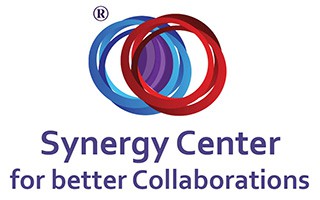Your organization’s vision and purpose can inform the assimilation of synergy language. The process doesn’t occur by chance — your dreams, visions, aspirations, goals or objectives inform your strategic focus or direction. Hence, for you to assimilate synergy language successfully in your organization, you must define your organization’s purpose. The synergy assimilation process requires help from others – you can’t achieve it alone, as mutual creation of new organizational reality is a basis of synergy formation.
But creation of new reality is a matter that requires your decision. You must decide whether it’s adequate to improve existing interactions among your employees. The occurrence of the creation of a new reality can be seen in situations, which involve change. For example, a merger between organizations or units.
It can also be seen when you intend to develop or improve a particular area of organization’s activity, such as customer service experience. In addition, it could be that your organization’s expanding overseas, launching a new product, etc. The effectiveness and quickness of the outcomes of synergy assimilation can increase if you focus on one particular area.
Arrangement of Meetings
For example, if you’ve defined your purpose as improvement of customer service experience, your focus can be increasing your organization’s responsiveness to customer’s needs. This situation would require you to arrange for two types of meetings.
First off, your management may require a presentation of the synergy method, administration of the questionnaire to participants, and extraction of examples of numerous interactive forms from the participants. At the end of the meeting, you can interview every board member based on their responses in the questionnaire they completed. Then, you can prepare feedback based on the analysis of the questionnaires.
Second, you can present your feedback based on the first meeting to the board members, soliciting their help in the mutual creation of an “improvement-based work plan”. You should take note of it together with delegation of roles and responsibilities, definition of goals, progress review, and “pain points”.
Axes of Progress
Feedback can help you gauge whether you’ve made progress, but there are two possible axes from which you can measure your progress. These axes coexist. Let’s have a look at them.
What you Must do
Let’s say that you’ve defined your goal as improvement of customer service experience. This axis is important, because it relates to your goal, which is of interest to your organization. In this case, you can focus on improving the area of responsiveness to customer’s needs.
How to Achieve That Goal
This relates to the root causes of the problem. In this instance, you want to know the reason why your responsiveness is slow. A deeper examination may reveal that the main reason is your employees. Hence, your diagnosis of the “illness” may identify the root cause as interactions between employees.
Your diagnoses may reveal problems with assimilation of a new procedure, technology or culture, perceptions of inequality or “otherness”, feelings of invasion or “disconnectedness”, and so forth.
Change Process
Change is in and on itself painful, but the extent of pain would largely depend on how it’s carried out. Change is a process, meaning that it follows procedures or stages. The more radical the procedure, the more painful the process can be. And just as a physician or surgeon would adopt a procedure to cure an illness, so is the management in bringing about change in an organization. In organizations, changes can occur in culture, work processes, leadership, and technology.
And because change is a delicate process, just as a surgical procedure, it’s important that you give it a consideration and balance it deserves. Your manner of carrying out a change procedure must be precise, just as a surgeon needs to be exceptionally skillful. Importantly, change procedure must be specific; it’s not a one-size-fits-all. You must adapt your procedure to the organizational context, needs and resources.
In a nut shell, the procedure for organizational change is sensitive, and is best left in the hands of those who are at the pyramidal apex; the topmost managers – chief executive officers (CEOs), proprietors, partners, board members, directors or co-founders.
Why’s That so?
Because they have the managerial authority; they control the reins — they steer the whole organization in a particular direction, which is in line with vision and mission. Moreover, no-one understands the needs and limitations of an organizations better than the executives themselves.
You are the person who’s in a better position to tell whether the change procedure is suitable for your organization, and whether there are enough resources to assimilate each stage of the change process. Advisably, you shouldn’t be very ambitious with the process of implementing change. A less ambitious process, which is less in-depth and shorter, can be an insurance against the possibility of backfiring.
Bottom Line…
Change is a process, which has stages, and you must follow a procedure when carrying it out. Change is delicate, sensitive and painful, but the extent of this depends on your procedure. If you carry it out radically and quickly, then you must prepare for intense and far-reaching outcomes.




